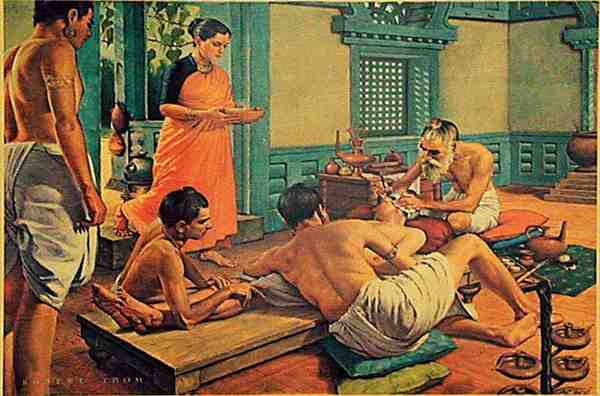To begin with, yoga is an ancient practice that originated in India thousands of years ago. It encompasses a holistic approach to physical, mental, and spiritual well-being. First and foremost, understanding the essence of yoga requires delving into its diverse types and the myriad benefits they offer. Moreover, certain asanas target specific muscle groups, aiding in overall body toning. In addition, moving beyond the physical, yoga seeks to unite the mind, body, and spirit.
Classical Yoga Therapy is an ancient and holistic approach to healing and well-being that draws from the principles of traditional yoga philosophy and practices. Rooted in the classical texts of yoga, such as the Yoga Sutras of Patanjali, this therapeutic approach aims to address physical, mental, and emotional imbalances through a combination of yoga techniques, lifestyle adjustments, and mindfulness practices.

The connection between Yoga and Ayurveda is relatively new in the West, though it has a long history in India. It is part of the new emphasis on Yoga Therapy for which the classical term Yoga chikitsa (treatment) is often used. However, we must note that traditional Yoga looked at body and prana (life energy), through the lens of Ayurveda. Yoga chikitsa was part of Ayurveda. This we can see very clearly by comparing Yoga texts like Yoga Sutras of Patanjali with Ayurvedic texts like Charaka Samhita and Sushruta Samhita.”

Jadibuti Shilajit , Salajeet, Mumijo or Asphaltum

About this item Pure and Sacred Leak proof private packing For Extra Strength And Stamina Product description It is mentioned in Ancient Ayurvedic books – Charaka Samhita, Sushruta Samhita etc., which were written 3000 years ago. Shilajit is probably the only ‘ayurvedic herb’, which is not obtained from any plant. On the contrary, it obtains from the mountains of Himalayan region in the form of tar and is mostly found during the summer months.
Benefits of Applying Ghee on Belly Button

The navel or belly button is often called our second brain. In the womb, it acts as the channel to survival for the unborn child. While the navel is the portal to the solar prana, Ayurveda likens ghrita or ghee to Ojas or life force. As mentioned in the famous ayurvedic scriptures Sushruta Samhita and Charaka Samhita, desi ghee possesses immense therapeutic properties
In terms of yogic philosophy, it embodies principles such as ahimsa (non-violence) and dhyana (meditation). Delving into the teachings of yoga, practitioners learn to cultivate self-discipline and embrace a sense of interconnectedness with all living beings.
Key Principles of Classical Yoga Therapy:
- Holistic Approach: Classical Yoga Therapy views the individual as a whole, recognizing the interconnectedness of the body, mind, and spirit. It addresses imbalances by considering the person’s physical health, mental state, emotions, and lifestyle.
- Yoga Philosophy: Central to Classical Yoga Therapy is the philosophical foundation of yoga, which emphasizes the understanding of suffering (dukkha) and the path to liberation (moksha) through practices such as ethical guidelines (yamas and niyamas), postures (asanas), breath control (pranayama), and meditation (dhyana).
- Dosha-Balancing: Drawing from Ayurveda, the sister science of yoga, Classical Yoga Therapy takes into account individual constitutions or doshas (Vata, Pitta, Kapha) and offers practices to balance these energies for optimal health.
- Mindfulness and Meditation: Meditation and mindfulness techniques are integral to Classical Yoga Therapy. These practices cultivate self-awareness, reduce stress, and promote emotional equilibrium.
- Breathwork (Pranayama): Breath is considered the bridge between the body and mind. Pranayama techniques regulate the breath to balance energy, calm the nervous system, and enhance vitality.
- Asana Practice: Customized yoga postures are prescribed based on an individual’s needs and conditions. Asanas aim to improve flexibility, strength, and balance while addressing specific physical issues.
- Stress Reduction: It places a strong emphasis on stress reduction, recognizing stress as a root cause of many imbalances. Techniques like relaxation, restorative poses, and meditation help manage stress effectively.
- Personalized Approach: Each individual is unique, and Classical Yoga Therapy tailors practices to the specific needs and abilities of the person, considering their physical limitations, emotional state, and overall goals.
- Lifestyle Modification: Beyond the mat, Classical Yoga Therapy encourages adopting a yogic lifestyle. This may involve dietary recommendations, mindful eating, proper sleep, and fostering positive relationships.
- Self-Empowerment: Classical Yoga Therapy empowers individuals to take an active role in their healing journey. Through education and practice, individuals develop the tools to manage their own health and well-being.
Applications of Classical Yoga Therapy:
Classical Yoga Therapy can be applied to a wide range of conditions, including:
- Physical Ailments: Musculoskeletal issues, chronic pain, cardiovascular concerns, respiratory disorders, digestive problems, and more.
- Mental Health: Anxiety, depression, stress-related disorders, insomnia, and other mental health challenges.
- Emotional Well-being: Grief, trauma, emotional imbalances, and cultivating emotional resilience.
- Lifestyle Disorders: Obesity, diabetes, hypertension, and metabolic syndrome.
- Rehabilitation: Supporting recovery from injuries, surgeries, or medical treatments.
- Preventive Health: Promoting overall well-being, preventing imbalances, and enhancing vitality.
Classical Yoga Therapy offers a comprehensive approach to health and well-being that addresses the complexities of the human experience. By integrating ancient wisdom with modern understanding, it provides individuals with the tools to restore balance, cultivate self-awareness, and lead a life of vitality, harmony, and inner peace. As a holistic and personalized approach, It empowers individuals to become active participants in their journey towards optimal health and well-being.

